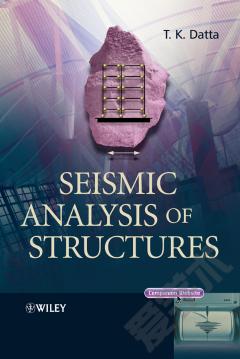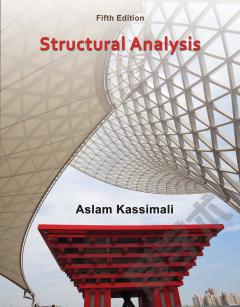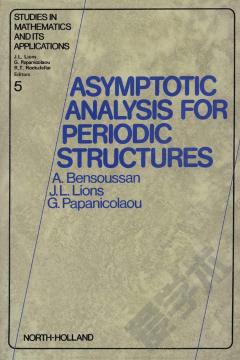Seismic Analysis of Structures
Preface. 1 Seismology. 1.1 Introduction. 1.2 Seismic Waves. 1.3 Earthquake Measurement Parameters. 1.4 Measurement of an Earthquake. 1.5 Modification of Earthquakes Due to the Nature of the Soil. 1.6 Seismic Hazard Analysis. 2 Seismic Inputs for Structures. 2.1 Introduction. 2.2 Time History Records. 2.3 Frequency Contents of Ground Motion. 2.4 Power Spectral Density Function of Ground Motion. 2.5 Response Spectrum of Earthquake. 2.6 Generation of Synthetic Accelerograms. 2.7 Prediction of Seismic Input Parameters. 3 Response Analysis for Specified Ground Motions. 3.1 Introduction. 3.2 Equation of Motion for a Single Degree of Freedom (SDOF) System. 3.3 Equations of Motion for a Multi-Degrees of Freedom (MDOF) System. 3.4 Response Analysis for Single Degree of Freedom (SDOF) System. 3.5 Response Analysis for Multi-Degrees of Freedom (MDOF) Systems. 4 Frequency Domain Spectral Analysis. 4.1 Introduction. 4.2 Stationary Random Process. 4.3 Fourier Series and Fourier Integral. 4.4 Auto Correlation and Cross Correlation Functions. 4.5 Power Spectral Density Function (Sxx) and Cross Power Spectral Density Function (Sxy). 4.6 Power Spectral Density Function (PSDF) Matrix. 4.7 PSDFs and Cross PSDFs of the Derivatives of the Process. 4.8 Single Input Single Output System (SISO). 4.9 MDOF System with Single-Point and Multi-Point Excitations. 4.10 PSDF Matrix of Member End Forces. 4.11 Modal Spectral Analysis. 4.12 Spectral Analysis Using the State-Space Formulation. 4.13 Steps for Developing a Program for Spectral Analysis in MATLABfor Multi-Support Excitation. 5 Response Spectrum Method of Analysis. 5.1 Introduction. 5.2 Concept of Equivalent Lateral Force and Response Spectrum Method of Analysis. 5.3 Response Spectrum Analysis for Single-Point Excitation. 5.4 Response Spectrum Analysis for Multi-Support Excitations. 5.5 Cascaded Analysis of Secondary Systems using Response Spectrum Method. 5.6 Approximate Modal Response Spectrum Method of Analysis. 5.7 Seismic Coefficient Method. 5.8 Comparison of Some Code Provisions Prescribed by Different Earthquake Codes. 6 Inelastic Seismic Response of Structures. 6.1 Introduction. 6.2 Non-Linear Analysis of Structures for Earthquake Forces. 6.3 Inelastic Earthquake Analysis of Multi-Storey Building Frames. 6.4 Pushover Analysis. 6.5 Concepts of Ductility and Inelastic Response Spectrum. 6.6 Ductility in a Multi-Storey Structure. 7 Seismic Soil Structure Interaction. 7.1 Introduction. 7.2 Wave Propagation through Soil. 7.3 One-Dimensional Wave Propagation and Ground Response Analysis. 7.4 2D or 3D Response Analysis in the Time Domain. 7.5 Dynamic Soil Structure Interaction. 7.5.1 Bounded Problem and Idealization of Realistic Problems. 7.6 Soil Pile Structure Interaction. 7.7 Seismic Analysis of Buried Structures. 8 Seismic Reliability Analysis of Structures. 8.1 Introduction. 8.2 Uncertainties. 8.3 Formulation of the Reliability Problem. 8.4 Methods of Finding Probabilities of Failure. 8.5 Seismic Reliability Analysis. 9 Seismic Control of Structures. 9.1 Introduction. 9.2 Base Isolation. 9.3 Base Isolators and their Characteristics. 9.4 Analysis of Base Isolated Buildings. 9.5 Design of Base Isolated Buildings. 9.6 Tuned Mass Damper. 9.7 Viscoelastic Dampers. 9.8 Active Structural Control. 9.9 Active Control Algorithms. 9.10 Semi-Active Control. Exercise Problems. References. Index.
{{comment.content}}








 京公网安备 11010802027623号
京公网安备 11010802027623号